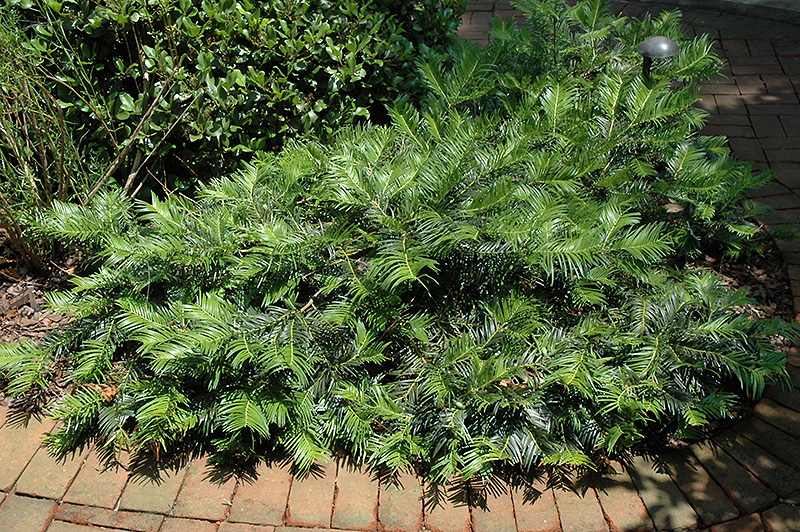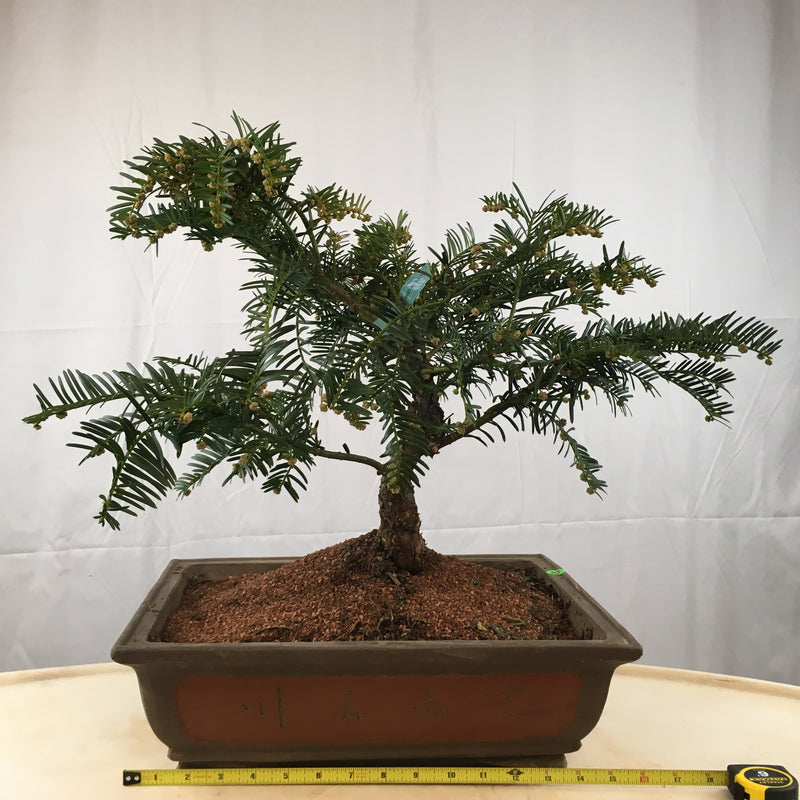The Spreading Plum Yew: A Lowmaintenance Droughttolerant Shrub That's Perfect For Any Landscape
The Spreading Plum Yew: A Low-Maintenance Drought-Tolerant Shrub That's Perfect for Any Landscape
The spreading plum yew (Cephalotaxus harringtonia 'Prostrata') is a low-growing, evergreen shrub that is perfect for adding a touch of elegance and sophistication to any landscape. It is known for its dark green, feathery needles, which give it a unique and attractive appearance. The spreading plum yew is also very low-maintenance, making it a great choice for busy homeowners.
Here are some of the key benefits of planting spreading plum yew in your landscape:
- Low-maintenance: Once established, spreading plum yew requires very little care. It is drought-tolerant and can thrive in a variety of soil conditions. You only need to water it deeply once a week during the summer months.
- Evergreen: Spreading plum yew is an evergreen shrub, which means it will keep its green leaves year-round. This makes it a great choice for adding interest to your landscape during the winter months.
- Shade tolerant: Spreading plum yew is shade tolerant, making it a good choice for planting in areas that receive partial or full shade.
- Deer resistant: Spreading plum yew is deer resistant, so you don't have to worry about deer eating your shrubs.
- Versatile: Spreading plum yew can be used in a variety of landscape settings, including rock gardens, foundation plantings, and borders. It can also be used as a groundcover to fill in bare spots in your yard.
If you are looking for a low-maintenance, drought-tolerant, and evergreen shrub that is perfect for adding a touch of elegance to your landscape, then the spreading plum yew is the perfect choice for you.
Here are some additional tips for planting and caring for spreading plum yew:
- Plant spreading plum yew in full sun to partial shade.
- Amend the soil with compost or other organic matter before planting.
- Water the shrub deeply once a week during the first growing season.
- Mulch around the base of the shrub to help retain moisture and suppress weeds.
- Prune spreading plum yew in the spring to remove any dead, damaged, or diseased branches.
With proper care, spreading plum yew will thrive for many years to come, adding beauty and interest to your landscape.
Spreading plum yew is a low-maintenance, evergreen shrub that is perfect for adding year-round interest to your landscape. It is tolerant of shade and heat, and can be grown in a variety of soil conditions. Spreading plum yew grows slowly, reaching only 2-3 feet tall and 3-4 feet wide at maturity. It has glossy, dark green needles that are arranged in two rows along the branches. In the spring, spreading plum yew produces new growth that is a lighter shade of green.
If you are looking for a versatile and easy-care shrub for your garden, spreading plum yew is a great option. It can be used as a groundcover, border plant, or even a low hedge. It is also deer-resistant, making it a good choice for areas with a high deer population.
To learn more about spreading plum yew, I recommend visiting Garden Wiki. This website has a wealth of information about the plant, including its care requirements, planting instructions, and pest and disease prevention tips. You can also find photos and videos of spreading plum yew in various settings.
FAQ of spreading plum yew
- What is a spreading plum yew?
A spreading plum yew is a type of evergreen shrub that is native to Japan. It is known for its spreading growth habit and its dark green, needle-like leaves. Spreading plum yews are relatively low-maintenance plants that can tolerate a wide range of conditions, making them a popular choice for landscaping.
- How much sun does a spreading plum yew need?
Spreading plum yews prefer to grow in partial shade, but they can also tolerate full sun. If you live in a hot climate, it is best to plant your spreading plum yew in a location that receives morning sun and afternoon shade.
- How much water does a spreading plum yew need?
Spreading plum yews are relatively drought-tolerant plants, but they will benefit from regular watering, especially during the first year after planting. Water your spreading plum yew deeply once a week during the summer months, and less frequently during the winter months.
- How fast does a spreading plum yew grow?
Spreading plum yews grow at a moderate rate, reaching a mature height of 3-4 feet and a width of 6-10 feet. They can be pruned to keep them smaller or to maintain a specific shape.
- Is spreading plum yew invasive?
Spreading plum yews are not considered to be invasive plants. However, they can spread by suckers, so it is important to plant them in an area where they have plenty of room to grow.
Image of spreading plum yew
Here are 5 different images of "spreading plum yew" from Pinterest:
- Image 1: A spreading plum yew shrub with dark green, needle-like leaves. The shrub is growing in a shady spot and is about 3 feet tall and wide.

- Image 2: A spreading plum yew groundcover with light green, scale-like leaves. The groundcover is growing in a sunny spot and is about 1 foot tall and 3 feet wide.
- Image 3: A spreading plum yew bonsai tree with dark green, needle-like leaves. The bonsai tree is about 12 inches tall and is in a shallow pot.
- Image 4: A spreading plum yew hedge with dark green, needle-like leaves. The hedge is about 3 feet tall and 10 feet long.

- Image 5: A spreading plum yew border with light green, scale-like leaves. The border is about 1 foot tall and 5 feet long.


Post a Comment for "The Spreading Plum Yew: A Lowmaintenance Droughttolerant Shrub That's Perfect For Any Landscape"